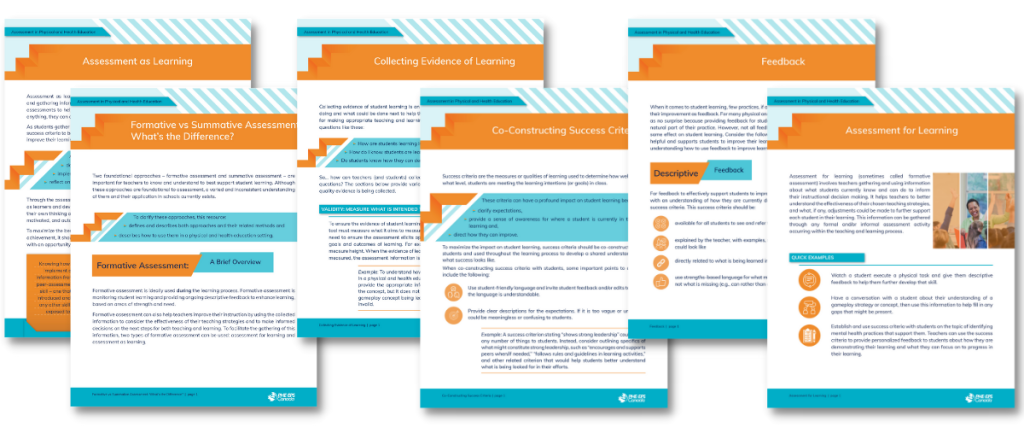Assessment in physical and health education is an essential component of purposeful and meaningful learning experiences for students, with the overarching goal of supporting and enhancing their learning.
There are two main purposes for assessment of student learning: improving learning and communicating learning. How assessment information is used will determine which purpose it is being used for, and one of the most effective ways that assessment can improve student learning is through an approach known as assessment for learning.
Assessment for learning is a process of collecting information on student learning to interpret their progress, use it to advance their learning, and communicate achievement as it relates to predefined learning outcomes. Effective practices consider learning across the psychomotor, cognitive, social, and affective domains as well as demonstrate alignment in the following areas: curriculum learning outcomes, assessment activities, and learning tasks within the class.
Quality assessment practices include:
- Sharing learning outcomes and success criteria with students throughout the learning process
- Inviting students to develop their learning goals and choosing how to demonstrate their learning
- Ensuring that assessment is aligned with the curriculum learning standards and the learning activities in class
- Self- and peer-assessment
- Student reflection of learning
Assessment in PHE Resources

In this series, we have developed six resources on important assessment topics. Click on the titles below to access and download PDFs of the resources.
1. Formative vs Summative Assessment: What's the Difference
4. Co-constructing Success Criteria
5. Collecting Evidence of Learning
6. Feedback
